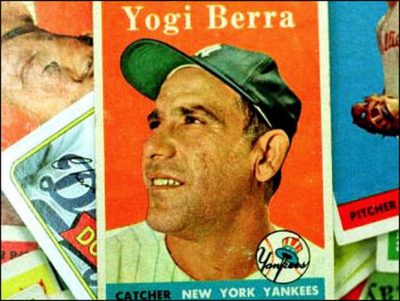 Having just returned from Australia, I’ll be devoting several upcoming blogs to my research and fact finding with how Australia is advancing in aging and dementia care, as well as dementia and age friendly best practices. I found their award wages for aged care workers to be one significant difference from the US and worthy of discussion.
Having just returned from Australia, I’ll be devoting several upcoming blogs to my research and fact finding with how Australia is advancing in aging and dementia care, as well as dementia and age friendly best practices. I found their award wages for aged care workers to be one significant difference from the US and worthy of discussion.
Award wages and workplace rights and responsibilities are managed by the Australian Government Fair Work Ombudsman. An employee’s minimum pay rate can come from an award, enterprise agreement, other registered agreement, or the national minimum wage.
Employees must be paid for all the hours they work including the time they spend in training, team meetings, opening and closing the business, and working unreasonable trial (what is equivalent to overtime in US) shifts.
An entry-level Aged Care Worker with less than 5 years of experience can expect to earn an average total compensation of AU$44,000. An Aged Care Worker with mid-career experience which includes employees with 5 to 10 years of experience can expect to earn an average total compensation of AU$46,000. An experienced Aged Care Worker which includes employees with 10 to 20 years of experience can expect to earn an average total compensation of AU$46,000. An Aged Care Worker with late-career experience which includes employees with greater than 20 years of experience can expect to earn an average total compensation of AU$48,000.
Although the healthcare and aged care systems differ from the US, I found that we are all experiencing the same challenges of a rapidly growing aging population. Workforce shortages, rising costs and changing policies are certainly a global concern.
Employee turnover in Australia is less significant than the US. While this is likely due to higher wages, they also have in place required training for all care workers, of which dementia care is included.
In late 2016 Dementia Training Australia rolled out Dementia Essentials which is delivered by Alzheimer’s Australia nationally.
The three-day course provides attendees with extensive knowledge of dementia, as well as focusing on person-centred practice, communication strategies, developing appropriate activities, and responding to unmet needs.
AGE-u-cate’s Dementia Live™️ and Compassionate Touch® programs have been overwhelmingly received in Australia and we are excited to be working with providers from across the country in expanding our presence in the coming year.
I learned that while we differ in how our “systems” work we all want to deliver high quality care to our aging populations. We all have challenges and are learning and growing from each other.
Next blog I’ll be talking about Australia’s amazing Men’s Shed program, so stay tuned!
Pam Brandon is President/Founder of AGE-u-cate® Training Institute and a passionate advocate for older adults and those that serve them.
 The increasing diversity of the U.S. and other nations offers opportunities and challenges for senior care care providers, health care systems, and policy makers to create and deliver services to culturally diverse patients and to train and increasingly culturally diverse workforce. Cultural competence refers to an ability to interact effectively with people of different cultures. Cultural competence comprises four components: (a) awareness of one’s own cultural worldview, (b) attitude towards cultural differences, (c) knowledge of different cultural practices and worldviews, and (d) cross-cultural skills. Developing cultural competence through training can result in a better ability to understand, communicate with, and effectively interact with people across cultures and can lead to a 15% decrease in miscommunication. In senior care, this communications training can significantly improve outcomes, especially in caring for those with dementias, chronic illness, pain and at end-of-life.
The increasing diversity of the U.S. and other nations offers opportunities and challenges for senior care care providers, health care systems, and policy makers to create and deliver services to culturally diverse patients and to train and increasingly culturally diverse workforce. Cultural competence refers to an ability to interact effectively with people of different cultures. Cultural competence comprises four components: (a) awareness of one’s own cultural worldview, (b) attitude towards cultural differences, (c) knowledge of different cultural practices and worldviews, and (d) cross-cultural skills. Developing cultural competence through training can result in a better ability to understand, communicate with, and effectively interact with people across cultures and can lead to a 15% decrease in miscommunication. In senior care, this communications training can significantly improve outcomes, especially in caring for those with dementias, chronic illness, pain and at end-of-life. Families caring for aging adults have and will continue to reach unprecedented numbers affecting every corner of our society. We MUST address the complex needs of this population who are the foundation of long-term care nationwide, exceeding Medicaid long-term care spending in all states (National Alliance for Caregiving and Overcare, March 2009). Jo Horne, author of Caregiving: Helping an Aging Love One created the Caregiver’s Bill of Rights. These are powerful and impactful words of hope and guidance for each and every person caring for a family member or friend:
Families caring for aging adults have and will continue to reach unprecedented numbers affecting every corner of our society. We MUST address the complex needs of this population who are the foundation of long-term care nationwide, exceeding Medicaid long-term care spending in all states (National Alliance for Caregiving and Overcare, March 2009). Jo Horne, author of Caregiving: Helping an Aging Love One created the Caregiver’s Bill of Rights. These are powerful and impactful words of hope and guidance for each and every person caring for a family member or friend: Lawrence Peter “Yogi” Berra was an American professional baseball catcher, manager, and coach who played 19 seasons in Major League Baseball. One of his famous quotes “The Future Ain’t What it Used to Be” couldn’t be more appropriate as we look at the paradigm shifts taking place in our aging world.
Lawrence Peter “Yogi” Berra was an American professional baseball catcher, manager, and coach who played 19 seasons in Major League Baseball. One of his famous quotes “The Future Ain’t What it Used to Be” couldn’t be more appropriate as we look at the paradigm shifts taking place in our aging world.